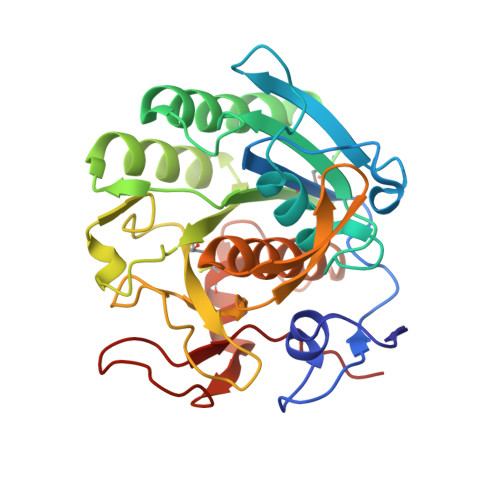The magic triangle goes MAD: experimental phasing with a bromine derivative
Beck, T., Gruene, T., Sheldrick, G.M.(2010) Acta Crystallogr D Biol Crystallogr 66: 374-380
- PubMed: 20382990
- DOI: https://doi.org/10.1107/S0907444909051609
- Primary Citation of Related Structures:
3GT3, 3GT4 - PubMed Abstract:
Experimental phasing is an essential technique for the solution of macromolecular structures. Since many heavy-atom ion soaks suffer from nonspecific binding, a novel class of compounds has been developed that combines heavy atoms with functional groups for binding to proteins. The phasing tool 5-amino-2,4,6-tribromoisophthalic acid (B3C) contains three functional groups (two carboxylate groups and one amino group) that interact with proteins via hydrogen bonds. Three Br atoms suitable for anomalous dispersion phasing are arranged in an equilateral triangle and are thus readily identified in the heavy-atom substructure. B3C was incorporated into proteinase K and a multiwavelength anomalous dispersion (MAD) experiment at the Br K edge was successfully carried out. Radiation damage to the bromine-carbon bond was investigated. A comparison with the phasing tool I3C that contains three I atoms for single-wavelength anomalous dispersion (SAD) phasing was also carried out.
Organizational Affiliation:
Department of Structural Chemistry, Georg-August-Universität Göttingen, Tammannstrasse 4, 37077 Göttingen, Germany. [email protected]
















